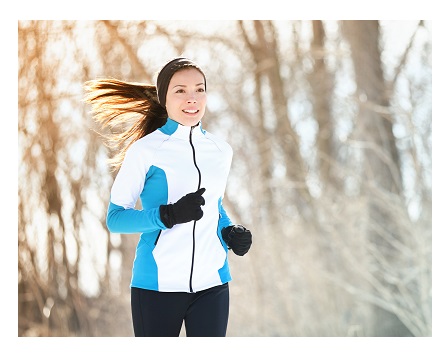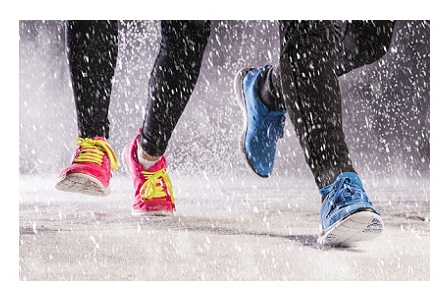Exercise in cold ambient air produces significant physiologic and psychological challenges. The physiologic strain of exercise in cold weather depends on three factors: a) hydration level, b) body metabolism, and c) body fat. One of the functions of the upper airways is to warm and moisturize the inhaled air before reaching the bronchi.
Cold air does not usually damage the airways. Even in an extreme cold weather, the inhaled air usually warms to 27 – 32°C by the time it reaches the bronchi. When exercising in cold weather, you breathe large volume of cold, dry air. The respiratory passages have to warm and moisturize the air you inhale, which results in considerable loss of water and heat. Water loss from airways usually contributes to overall dehydration, dry mouth, burning sensation in the throat and irritation of the airways.
Cold-induced dry throat usually triggers cough during the recovery period. In people with asthma, the signs and symptoms may exacerbate (cold weather-induced asthma attack). Studies have confirmed that post-exercise coughing in cold weather relates directly to the overall respiratory water loss, not heat loss.
Another interesting fact is that the body shows remarkable flexibility in selecting fuel when exposed to cold. A response to cold is shivering, which serves an important role in maintaining core body temperature.
When you do low intensity exercise in an appropriate temperature, the body consumes mainly fats. But when you exercise with low intensity (e.g. brisk walk) in cold weather, as the duration of exercise increases and shivering occurs, the body shifts from fats to carbohydrates as fuel.
Exercise in cold weather causes shivering, resulting in an increase in oxygen consumption followed by an increase in body metabolism. Subcutaneous fat acts as an insulation and prevents from dissipating heat. Therefore, the less body fat you have, the more cold you feel when exposed to cold.
Safety guidelines when exercising in cold weather:
1) Drink plenty of water to keep your body fully hydrated.
2) Have complex carbohydrates of alkaline nature, up to 1gr/kg, about 90 minutes before your exercise (see nutrition before exercise).
3) Wear a scarf or cellulose mask-type “balaclava” to cover your nose and mouth to trap the water in exhaled air, which subsequently warms and moisturizes the next incoming inhaled air.
4) Cover your upper chest up to your chin, the “thyroid territory”, with a woolen scarf.
5) Dress in three layers: the first layer had better be a lightweight synthetic material such as polypropylene to draw away moisture and sweat from your skin. The second layer should be a woolen material or fleece to insulate your body, and the third layer has to be a lightweight, waterproof and wind resistant material.
6) Always wear a hat, gloves, and a sturdy footwear that has a good traction to prevent from slip and fall on snow or ice.
7) Pay attention to weather forecast and let someone know that you are out for an exercise and about your route.
The “No-Winter Fitness List’:
If you have been diagnosed with any of the following medical conditions, we do not recommend exercising outdoor in cold weather. And if you decided to exercise in cold weather, always consult your doctor first.
a) Heart diseases.
b) Asthma.
c) Cold-induced urticaria.
d) Raynaud’s disease or phenomenon.
e) Buerger`s disease.
f) Peripheral atherosclerosis.
Stay safe and healthy
Abazar Habibinia, MD, DFN, CSDTT
Executive Director of The Canadian Academy of Sports Nutrition



